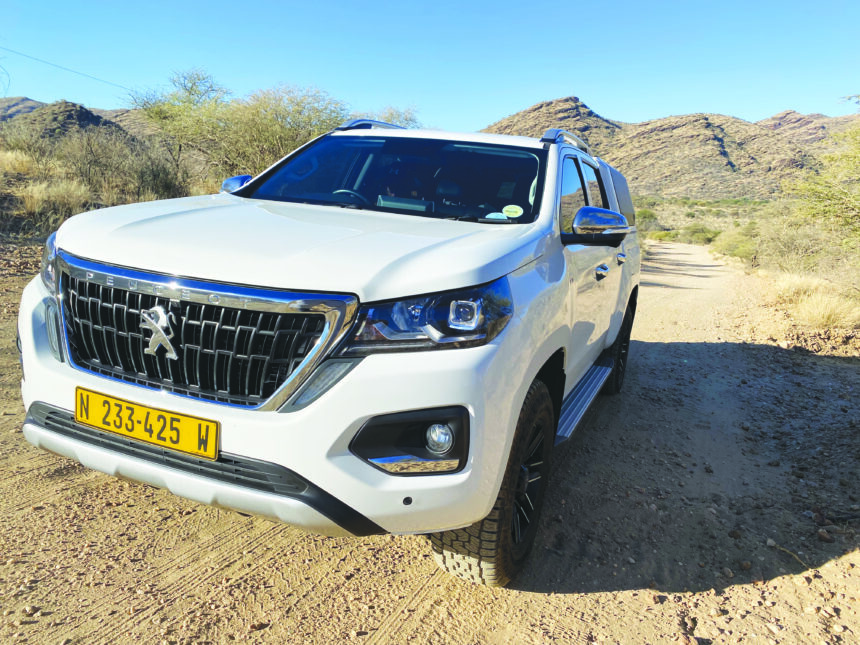Owning a bakkie in Namibia is an emotional endeavour. This is because, for many Namibians, a bakkie is more often than not used to put bread on the table as it is utilised either as a farming workhorse or a reliable cargo and people carrier to tow and load goods for big and small businesses.
For this reason, convincing Namibians to embrace a new bakkie brand is often an exercise in futility due to the passion this topic extracts from owners.
Now, hoping to get its foot in the door of Namibia’s bakkie market is the Landtrek, from Peugeot, which is one of the oldest car manufacturers in the world. While the French don’t really buy bakkies, the Landtrek is specifically built for emerging markets like in southern Africa.
This makes the Landtrek a relatively new bakkie brand for Namibia, and it is now retailing through M&Z Motors. The new Landtrek 1.9 Allure 2×4 retails for N$524 900 while the 4×4 version with rear differential lock goes for N$610 900.
This week, Woema was fortunate to test drive Peugeot’s Landtrek double cab for a few days. The Landtrek is jointly developed with Chinese car manufacturer Changan Automobile.
When seeing the Landtrek from the side you might be forgiven for mistaking it for one of the many popular brands on Namibian roads.
However, a front view reveals Peugeot’s distinctive vertical grille bearing the
Lion in its centre, with distinctive LED
lights that when combined are quite intimidating and exude confidence needed from a bakkie.
This reminds older drivers of
Peugeot’s 404 and 504 bakkies that decades ago both made their marks as African legends.
Overall, the Landtrek is a smooth and comfortable ride with good handling and excellent braking. Getting used to the Landtrek’s sensitive throttle took no time at all. A heavy foot will struggle to get the desired response from this bakkie, but when operated optimally, the throttle will definitely produce the desired result.
All-in-all, the Landtrek is an amicable start with solid build quality for the tough bakkie market. The test vehicle was a 4×4 version, with steering configured optimally for off-road manoeuvring. This makes the Landtrek quite comfortable on gravel roads and a breeze for 4×4 routes with its high ground clearance of 235mm.
The Landtrek double cab bakkie comfortably accommodates five passengers, although as with most bakkies the rear seat legroom leaves much to be desired. Peugeot did manage to pay special attention to
the three rear passengers, with backrests tilted to 23° for more comfort. In the front relaxation is guaranteed with six-way adjustable seats with a wide range of settings suitable for all body types.
When in 4X4, the Landtrek engages
a low ratio transfer box and a mechanical locking rear differential lock to optimise traction whatever the track
conditions.
In the interior, the Landtrek’s 25.4cm touchscreen mirrors any smartphone and offers a range of features including an off-road camera and 360° vision to help drivers overcome obstacles or narrow spaces. Occupants can also access content on an in-built 10GB hard drive on board.
Some other impressive features include Hill Descent Control, Hill Assist Control and Trailer-Sway Control.
The 1.9-litre diesel engine produces 110 kW via a variable geometry turbo and 16 valves. A torque of 350Nm is generated and its short ratio gearbox makes it a high-performance off-roader with a high payload. The surprisingly fuel economical diesel engine is handled by a six-speed automatic gearbox that offers three drive modes, Normal, Sport or Eco.



